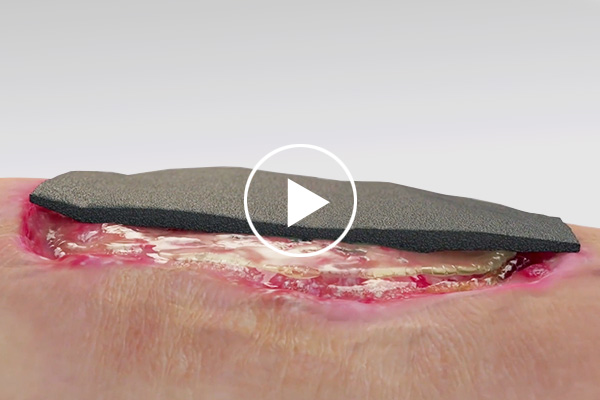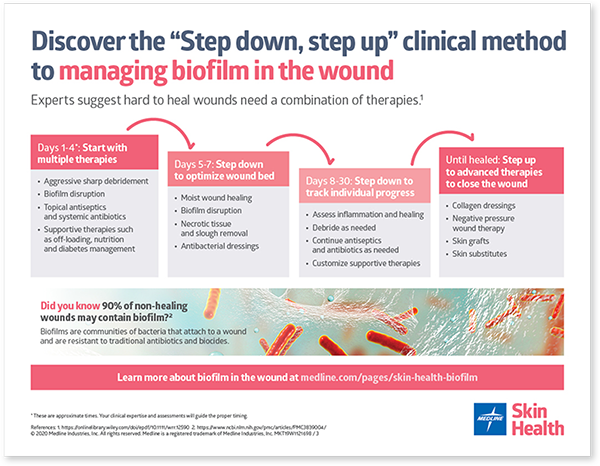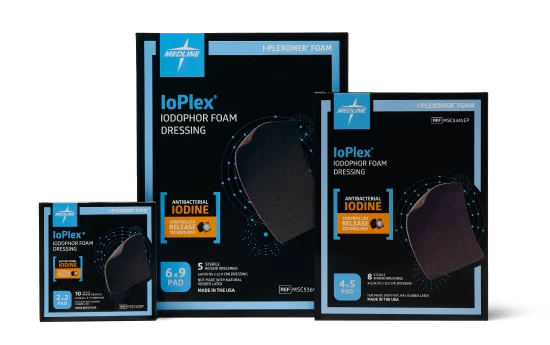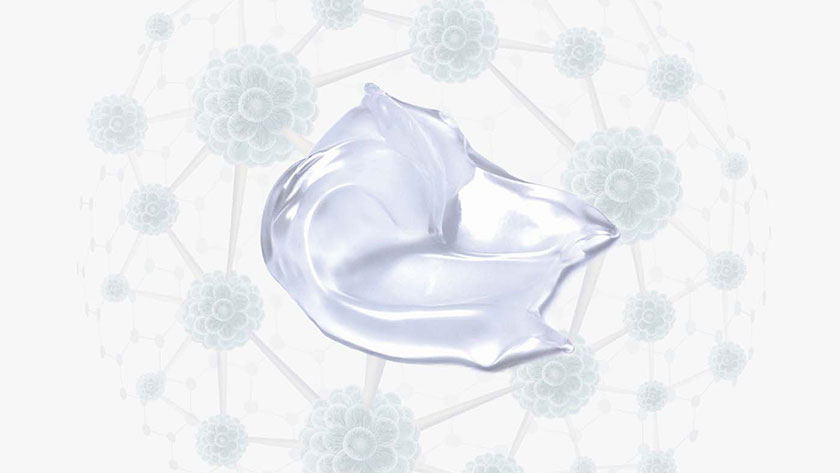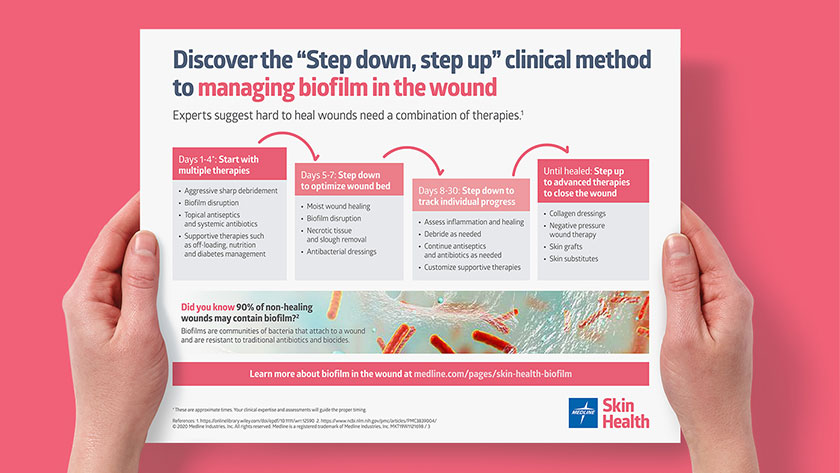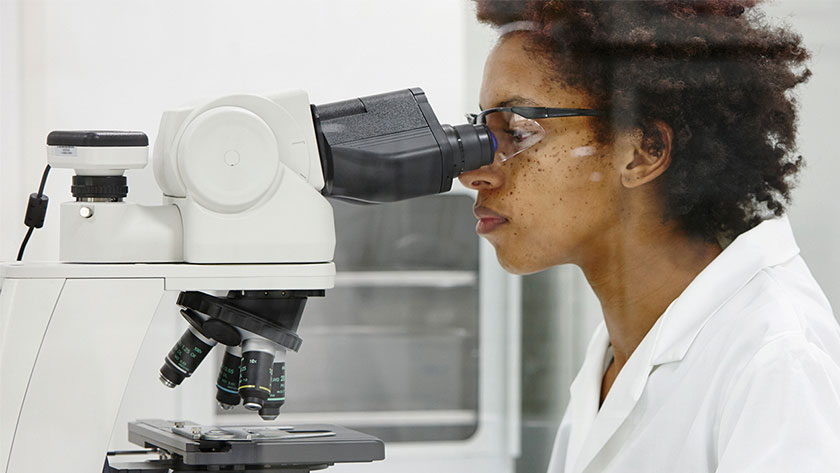What is IoPlex® and how can it help with non-healing wounds?
We answer your questions about the superior, slow-release iodine dressing.
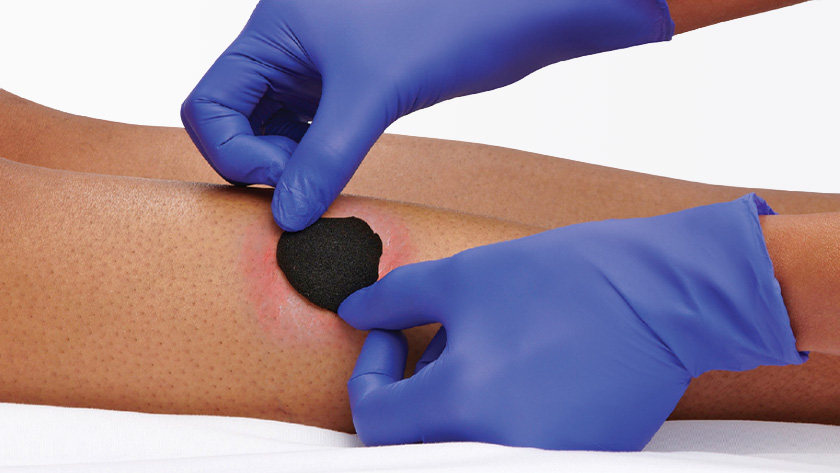
Non-healing wounds often contain biofilm, a diverse community of bacteria that attaches to the wound. Biofilm is covered with a protective layer called an extracellular matrix. This complex structure of biofilm keeps many antibiotics and antimicrobials from working—and keeps wounds in an inflammatory stage, so they can’t heal. IoPlex® Iodophor Foam Dressing can help overcome barriers to healing chronic wounds such as pressure injuries, diabetic foot ulcers and venous stasis ulcers.
In this article, we answer frequently asked questions about IoPlex.
What is IoPlex?
IoPlex is a hydrophilic, highly absorbent polyvinyl alcohol-based foam dressing that is complexed with iodine. IoPlex is an advanced foam dressing with controlled-release iodine to provide broad-spectrum antibacterial properties.
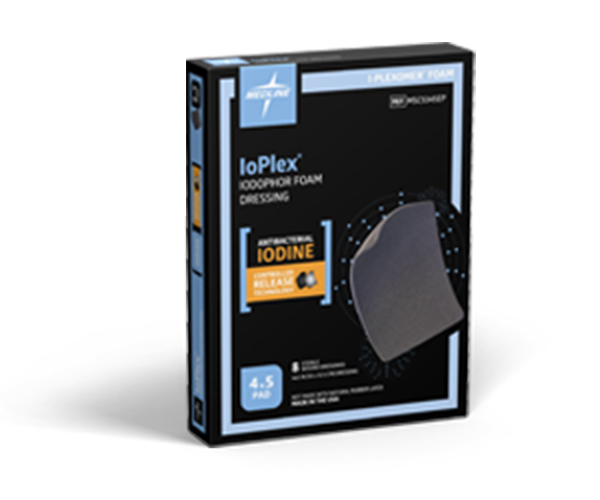
What does IoPlex do?
The innovative, proprietary I-Plexomer™ Technology of IoPlex releases iodine as the dressing absorbs exudate. Although debridement is common practice with stalled wounds, debridement alone doesn’t usually get a chronic wound on a healing path because biofilm regenerates so quickly. Many caregivers hit a dead-end with traditional dressings such as silver, which doesn’t penetrate biofilm’s extracellular polymeric matrix.
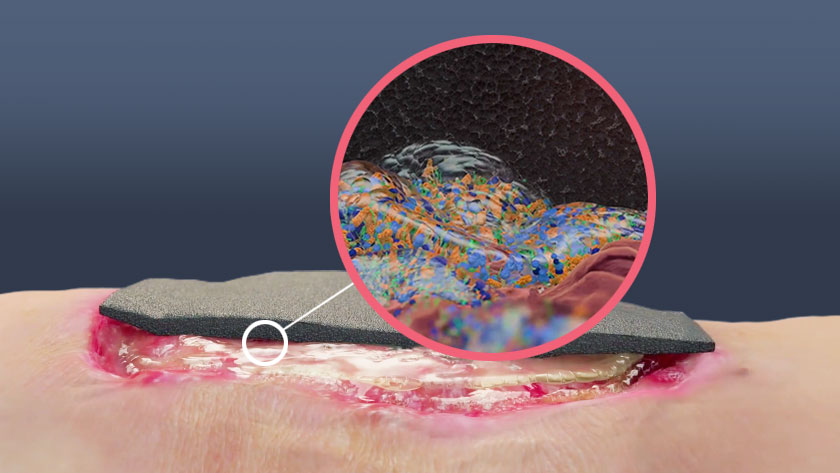
That’s where IoPlex comes in. IoPlex is innovative and has been shown to be effective in-vitro at managing biofilm.
How does iodine help promote wound healing?
Long known as a powerful antiseptic, iodine is often used to prepare a patient’s skin before surgery. Iodine has demonstrated superiority as an antibacterial agent to manage biofilm in numerous in-vitro studies.1,2,3,4 In fact, iodine has been used in wound care since the American Civil War, but it got a bad reputation for being cytotoxic in its native state due to dose dumping. IoPlex is different. The slow release iodine of IoPlex reduces the cytotoxic effect and avoids dose dumping. The iodophor in the PVA foam of IoPlex provides concentration over an extended time. In IoPlex, the innovative technology provides a gentle release of iodine that maintains efficacy against microorganisms.5
How does IoPlex work?
IoPlex is chemically complexed with iodine to give it three mechanisms of action:
- The highly absorbent PVA foam dressing provides active exudate control with a proprietary mixture of molecular chains, or polymers. These polymers create charges that lead to a wicking action, which makes the dressing effective at removing excess wound exudate and helping to draw out mobile components such as bacteria, debris and loose slough into the wound dressing.
- Iodine is highly reactive and can penetrate bacterial cell walls for antibacterial effects on a cellular level. Iodine has also been shown to cause cell dysfunction and put a stop to cellular replication to help kill the bacteria.
- Special technology called I-Plexomer technology produces a reservoir for iodine, allowing a safe, effective and controlled release that’s delivered continuously while the dressing is in place. IoPlex releases more iodine as the dressing absorbs more fluid. In this way, the dressing provides a relentless assault on biofilm over time.
Why is slow-release iodine important?
Biofilm is hard to beat. It takes sustained aggressive treatment to break down the extracellular matrix and keep biofilm from regenerating. Some caregivers may think that more is better when it comes to iodine. However, this can result in dose dumping, a practice that can be toxic to granulating tissues and does not have the sustained antibiotic approach that helps get rid of biofilm. IoPlex achieves a continuous, slow release of iodine in the dressing that lasts up to 72 hours.
What kinds of wounds is IoPlex effective on?
IoPlex is specifically indicated for infected wounds, an indication of remarkably few advanced dressings. Also, iodophor wound dressings are highly effective in managing both acute and chronic wounds.
IoPlex can be part of an aggressive “Step down, step up” clinical method to remove biofilm in a wound and, with venous ulcers, IoPlex can also be used under compression therapy. IoPlex is ideal for chronic, draining wounds that are stuck in a non-healing cycle.
Is IoPlex the same as Hydrofera Blue?
No, IoPlex is categorically different as it has been shown through in-vitro studies to outperform Hydrofera Blue on 5 different biofilm models. The studies show, for instance, that IoPlex killed more P.aeruginosa biofilm than Hydrofera Blue at 24 hours in vitro.6
The before and after images show an example of how IoPlex can improve stalled wounds. The wound had been present for five months. But with IoPlex, by day 28, 100% granulation tissue was observed.7

Before
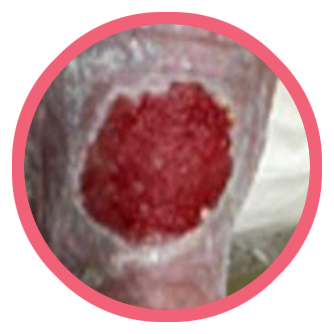
After 28 days
What are other benefits of IoPlex?
In addition to the benefits of slow-release iodine, there is no known resistance to iodine, which helps prevent multidrug-resistant organisms (MDROs). IoPlex also changes from black to white when the dressing’s iodine supply is depleted, providing a visual indicator for dressing change. IoPlex helps prevent maceration of the periwound and it can be used with enzymatic debriders.
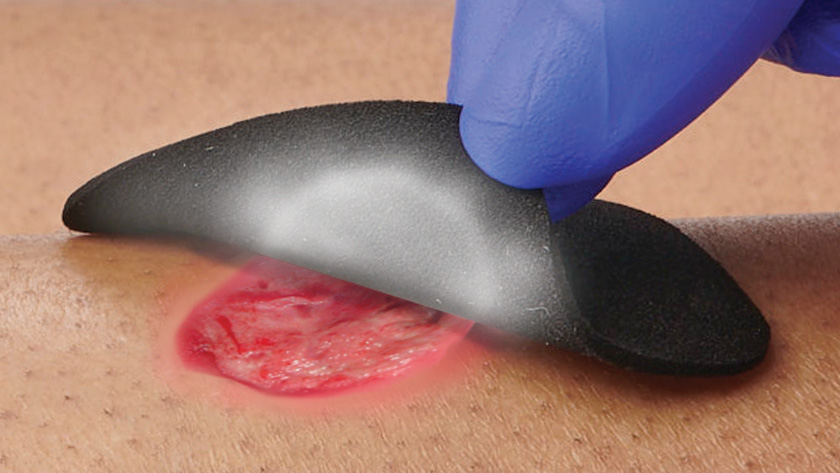
Can patients be allergic to iodine?
There is no known allergy to elemental iodine, and it’s actually essential for our body. If a patient says they react to iodine with a skin irritation, it may be a reaction to a contrast dye agent.7
How is IoPlex applied?
IoPlex is a borderless foam dressing that can be stacked and cut to the wound shape. The educational packaging empowers caregivers with just-in-time instruction. In short, here is the simple application process:

- Start by cleaning the wound bed with sterile water or saline, then remove IoPlex from its packaging.
- Cut the dressing to size, minimizing overlap onto skin to prevent over drying. If placing it under a compression wrap, three IoPlex layers may be stacked for appropriate control and fitting.
- Cover IoPlex with an appropriate secondary dressing and monitor drainage. IoPlex should remain soft and moist, not wet. If the dressing dries out, it can be remoistened with saline or water.
Key takeaway
Iodine has been used for centuries as a healing agent. However, it wasn’t until more advanced technology such as that of IoPlex antibacterial foam dressing, that it has been able to be used more safely and effectively. IoPlex uses slow-release iodine to help with biofilm on stalled wounds. IoPlex has been shown to outperform other dressings such as silver and Hydrofera Blue. See what IoPlex can do for your patients: Request a sample.
References:
- Phillips PL, Yang Q, Sampson E, Schultz G. Effects of antimicrobial agents on an in vitro biofilm model of skin wounds. Advances in Wound Care. 2010; 1:299-304.
- RHill KE, Malic S, McKee R, Rennison T, Harding KG, et al. An in vitro model of chronic wound biofilms to test wound dressings and assess antimicrobial susceptibilities. Journal of Antimicrobial Chemotherapy. 2010; 65(6):195-206.
- Thorn RMS, Austin AJ, Greenman J, Wilkins JPG, Davis PJ. In vitro comparison of antimicrobial activity of iodine and silver dressings against biofilms. Journal of Wound Care. 2009;18(8):343-346.
- Phillips PL, Yang Q, Davis S, Sampson EM, Azeke JI, et al. Antimicrobial dressing efficacy against mature Pseudomonas aeruginosa biofilm on porcine skin explants. International Wound Journal. 2015; 12(4):469-483.
- Sibbald RG, Leaper DJ, Queen D. Iodine made easy. Wounds International. 2011;2(2). Available at: https://www.woundsinternational.com/resources/details/iodine-made-easy
- Chen R, Mullin M, Salisbury AM, Percival SL. Evaluation of the Efficacy of an iodine-based wound dressing against biofilms using confocal scanning laser microscopy when in direct contact and when in an artificial wound eschar model. SAWC Spring, 2021.
- Data on file
- Janich, M. (2022, November 12). Iodine allergy: myth or reality? – ECARF. ECARF. https://www.ecarf.org/en/iod-allergie-mythos-oder-wahrheit/
